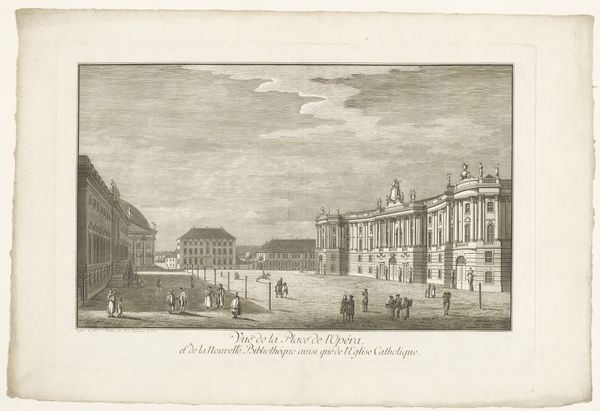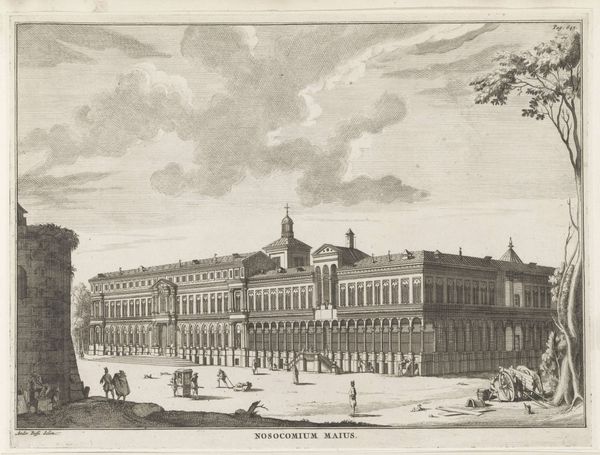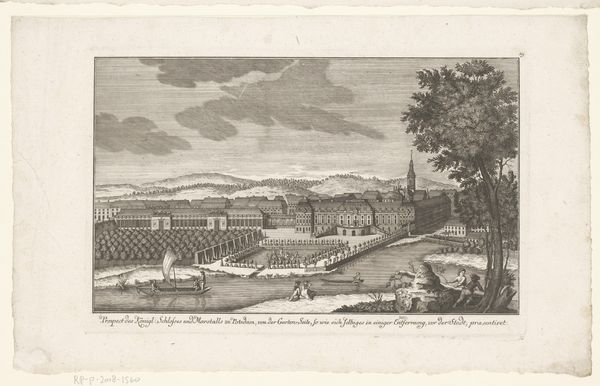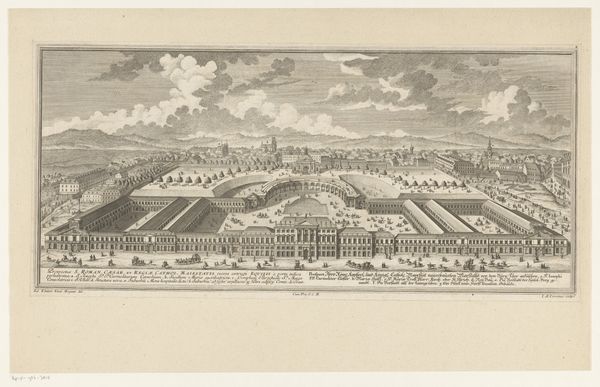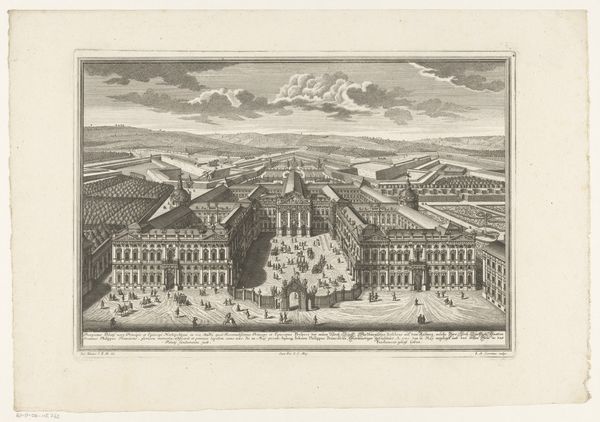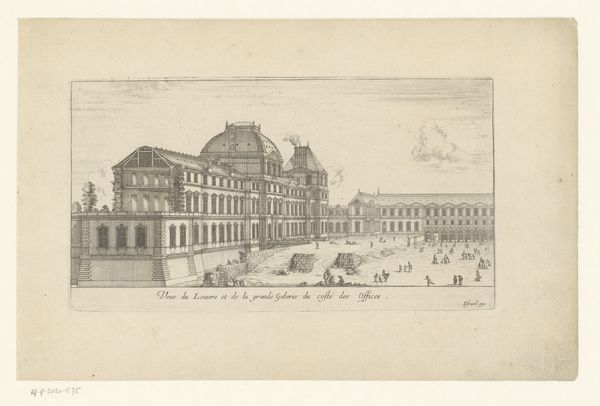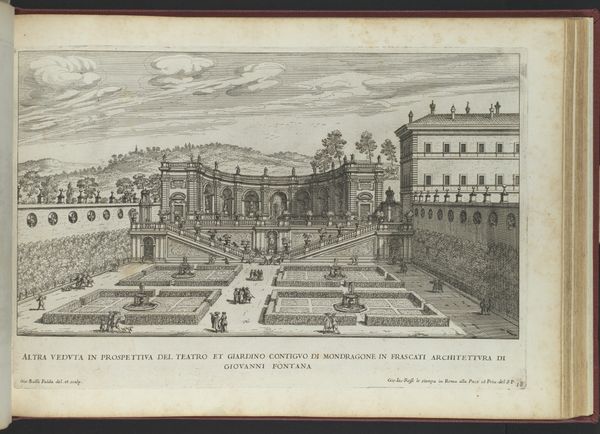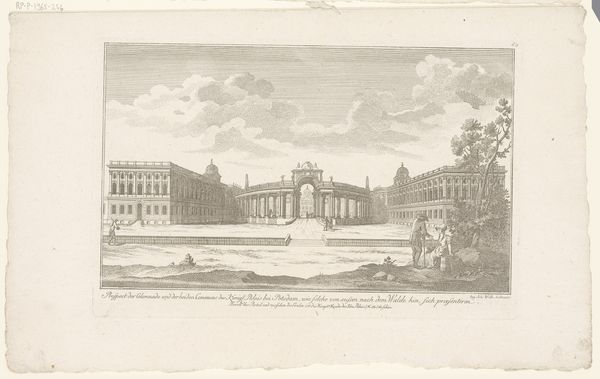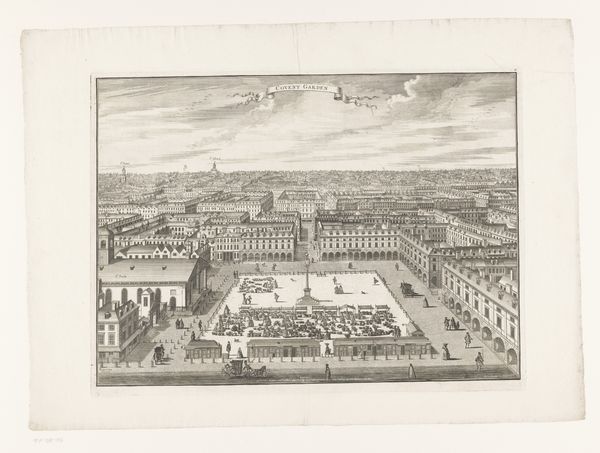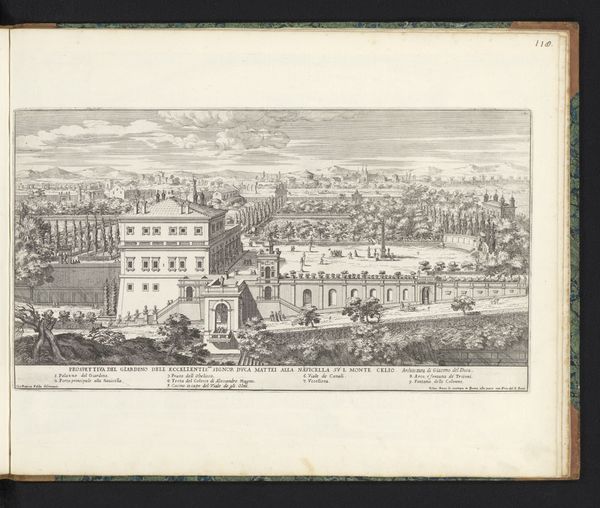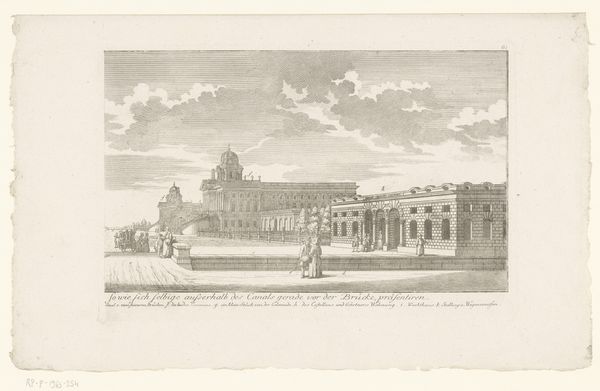
print, etching, engraving
#
baroque
# print
#
etching
#
old engraving style
#
landscape
#
cityscape
#
engraving
Dimensions: height 176 mm, width 295 mm
Copyright: Rijks Museum: Open Domain
Curator: This is a 1756 print by Jan Caspar Philips titled "Gezicht op het paleis van Versailles," or "View of the Palace of Versailles." It's a meticulously detailed etching and engraving, showcasing the palace as seen from the main square. Editor: My initial reaction is a sense of immense scale, almost overwhelming in its grandeur, yet the figures below seem tiny and somewhat lost against it. There is so much activity suggested in this monochrome palette! Curator: Exactly, the Baroque era was all about demonstrating power through scale. This print wasn’t just documentation; it was a deliberate representation of Louis XV’s power. The palace itself, of course, was central to that projection, a key site for understanding royal authority. Editor: And that authority, visually reinforced here, was certainly at the expense of so many others. Seeing those tiny figures almost feels symbolic. I wonder how the circulation of images like this, showcasing unimaginable opulence, affected popular opinion during the build up to the French revolution? Curator: It's crucial to remember that prints like this circulated widely and contributed to the construction of the monarchy's image, both positively and negatively. The precision with which Philips renders every detail, from the architecture to the landscaping, reveals much about the Palace’s significance within French society at the time. The etching process, in itself, allowed for that incredible intricacy to be copied and disseminated across communities far beyond the palace walls. Editor: Yes, thinking about the materials adds a crucial layer. Etchings like these weren't just beautiful images; they were also vehicles for spreading ideals and justifying extreme economic disparities that benefited the ruling classes. In a world so saturated with mass media today, the notion of a singular, dominant narrative, like the image of Versailles projected by the royal court, prompts many necessary questions of legitimacy. Curator: Precisely. By looking critically at this “View of the Palace of Versailles”, we gain invaluable perspective into the political role of imagery. Editor: For me, that questioning offers new meaning and purpose when engaging with cultural history. Thank you for shining light on it today.
Comments
No comments
Be the first to comment and join the conversation on the ultimate creative platform.
